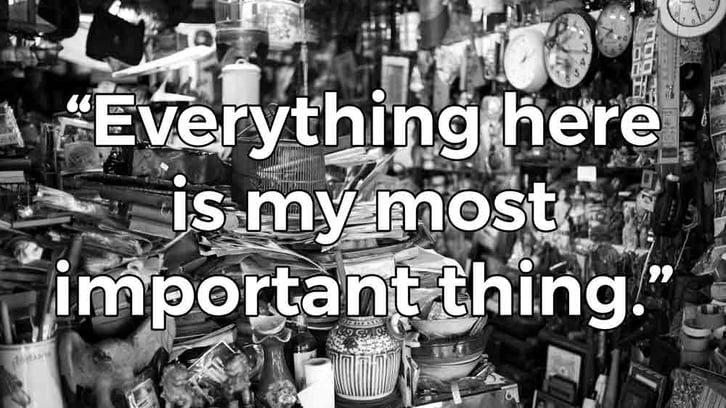In the arms race for customer intelligence and customer experience improvement, you may find yourself compelled to blindly collect data. It may go something like this:
Talking Head: Big data is the future.
Replying Head: Yes, future. Big data.
TH: Let’s collect data.
RH: I agree. Which data do you want to collect?
TH: I guess all of it.
RH: This is a good plan.
TH: We are very clever.
Now, if you find yourself in such a place: SNAP OUT OF IT. Hoarding data is the sort of thing that can develop into a compulsion, and then a real problem.

Too Much Data Can Be Averse to Improving Customer Experience
A real risk with bulk data collection is that the act of collecting lots of data can be expensive and inefficient. And data doesn't always have apparent meaning. Without clear and conscious data analysis, you could easily overwhelm your team with numbers.
And if you imply that every number is most important, how can your employees prioritize actions?

Here's an example: A recently re-popular news story reports an NSA whistleblower's belief that the agency is taking in too much data. He argues the NSA is overwhelmed by data—a circumstance he calls “bulk data failure.” Though the agency is capable of “buffering” more than 21 petabytes a day, it’s essentially rendered the agency ineffective. (Note: 1 petabyte is a million gigabytes…)
Now, here’s hoping you’re not collecting NSA-levels of data. But consider it a lesson in proportion. Data overload can be a real risk to action. It can spread your people too thin, make your targets unclear, and cause analysis paralysis in your customer experience improvement.
Strive for Actionable Insights in the Customer Experience
So before you leap blindly into the data abyss, consider your ideal result. Then determine the customer experience measurements—whether transactional or emotional—that can help you get there. What touchpoints matter most to your customer experience? What measurements are employees most likely to understand and adopt?
In other words:

Don’t be blinded by the promise of data collection, but rather concentrate on how to leverage that data for improving customer experience. Look for actionable insights and take advantage of them. Try to take action continuously and effectively.
Want more?
If you're looking to improve customer experience, or maybe just interested in insights, then make sure to subscribe to our blog. You can receive updates in your inbox whenever is best for you.
And if you’re looking for more information on actionable insights, click the button below. It'll take you to a free workbook centered on taking action on customer feedback.
As always, we’re here if you have any questions. See you soon, and thanks for reading.






%20(1).png)